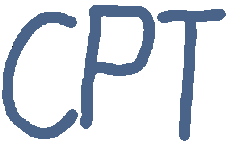
|
Calendar of Physics Talks Vienna
| A Mass-Angular Momentum-Charge Inequality for Multiple Black Holes, Size-Angular Momentum-Charge Inequalities for Bodies, and Existence of Black Holes |
| Speaker: | Marcus Khuri (Stony Brook) |
| Abstract: | Lunchseminar: In the first part of the talk we present a proof of the mass-angular momentum-charge inequality for multiple black holes (joint with Gilbert Weinstein). In the second part,
new inequalities relating the size and angular momentum as well as size and charge
of bodies is presented. Lastly, black hole existence results due to concentration of
angular momentum and charge will be discussed.
|
| Date: | Mon, 15.06.2015 |
| Time: | 13:00 |
| Duration: | 60 min |
| Location: | Arbeitsgruppe Gravitation, Währinger Strasse 17, common room, 1. Stock |
| Contact: | P.T. Chrusciel |
| (Accurate) Predictions for New Strong Dynamics at the LHC |
| Speaker: | Diogo Buarque Franzosi (Southern Denmark Univ., CP3-Origins) |
| Abstract: | Despite the common lore, dynamical electroweak symmetry breaking can
feature a light scalar with couplings similar to the SM Higgs boson.
In this talk I will revise some points that make new strong dynamics
a promising possibility. Then I will discuss some phenomenology for the
LHC,Drell-Yan production and the complementarity of weak boson scattering. In this class of models, also heavier and broad resonances
are expected to appear, and the correct treatment of width effects in
this kind of state is always prone to discussion. I will present a
scheme to treat broad unstable particles based on effective operators
which can account for running width effects in a gauge invariant fashion. Finally, also modifications on interactions beyond EWPO are
expected. I will present thecomputation of top quark chromomagnetic
moment in top pair production at NLO in QCD which can naturally appear |
| Date: | Tue, 16.06.2015 |
| Time: | 16:15 |
| Duration: | 60 min |
| Location: | Fakultät für Physik, Erwin-Schrödinger-Hörsaal, Boltzmanngasse 5, 5. Stock |
| Contact: | A. Hoang, H. Neufeld |
| Quiver gauge theories and integrable lattice models |
| Speaker: | Junya Yagi (SISSA) |
| Abstract: | I will discuss connections among supersymmetric quiver gauge theories, topological quantum field theories (TQFTs), and integrable lattice models in statistical mechanics. This work combines ideas from (1) the correspondence between class-S theories and TQFTs; (2) "gauge/YBE correspondence" between N=1 supersymmetric indices and solutions of the Yang-Baxter equation; and (3) Costello's construction of integrable lattice models from TQFTs equipped with line operators. |
| Date: | Wed, 17.06.2015 |
| Time: | 16:15 |
| Duration: | 60 min |
| Location: | ESI, kleiner Hörsaal |
| Contact: | Nils Carqueville |
| Mapping spaces in supergeometry and applications in geometry and physics |
| Speaker: | Florian Hanisch (Potsdam University) |
| Abstract: | Supergeometry is the geometry of spaces whose rings of functions contain
commuting as well as anticommuting elements; they thus allow for a
description of "classical" physical systems containing bosonic as well as
fermionic degrees of freedom.
After a short introduction to different approaches to the subject, we will
discuss the construction of "mapping space"-objects and some problems
resulting from non-compact domains (which are particularly relevant for
physical applications). We will then explain how the framework can be used
to describe spaces of solutions to PDEs for "classical" fermionic
quantities. Spaces of this type arise in geometrical and physical
applications, we will briefly describe the construction of the
(infinite-dim.) phase space associated to a simple fermionic field
theory. |
| Date: | Thu, 18.06.2015 |
| Time: | 11:00 |
| Duration: | 60 min |
| Location: | University of Vienna, Department of Mathematics, Besprechungszimmer 2nd floor |
| Contact: | Volker Branding |
| Quantum systems as spacetime probes |
| Speaker: | Ivette Fuentes (Vienna) |
| Abstract: | Hawking radiation and particle creation by an expanding Universe are paradigmatic predictions of quantum field theory in curved spacetime. Although the theory is a few decades old, it still awaits experimental demonstration. At first sight, the effects predicted by the theory are too small to be measured in the laboratory. Therefore, current experimental efforts have been directed towards siumlating Hawking radiation and studying quantum particle creation in analogue spacetimes.
In this talk, I will present a proposal to test directly effects of quantum field theory in the Earth's spacetime using quantum technologies. Under certain circumstances, real spacetime distortions
(such as gravitational waves) can produce observable effects in the state of phonons of a Bose-Einstein condensate. The sensitivity of the phononic field to the underlying spacetime can also be used .... |
| Date: | Thu, 18.06.2015 |
| Time: | 14:00 |
| Duration: | 60 min |
| Location: | Arbeitsgruppe Gravitation, Währinger Strasse 17, Seminarraum A, 2. Stock, 1090 Wien |
| Contact: | P.T. Chrusciel |
| Nonassociative star products |
| Speaker: | Dmitri Vassilevich (ABC Federal U. ) |
| Abstract: | Star product is a formal deformation of the point-wise product of smooth functions on some manifold. In the classical setting, the Poisson bracket serves as an initial conditions, while the associativity allows to proceed to higher orders. Some applications to
string theory require deformation in the direction of a quasi-Poisson bracket (that does not satisfy the Jacobi identity). This initial conditions is incompatible with associativity, it is quite unclear which restrictions can be imposed on the deformation. We show that for any quasi-Poisson bracket the star product exists and is essentially unique if one requires hermiticity and the Weyl condition.
|
| Date: | Thu, 18.06.2015 |
| Time: | 16:00 |
| Duration: | 60 min |
| Location: | SEM 136, TU Wien, Freihaus, 10th floor (Wiedner Hauptstr. 8-10, A-1040 Vienna) |
| Contact: | Daniel Grumiller and Johanna Knapp |
|
